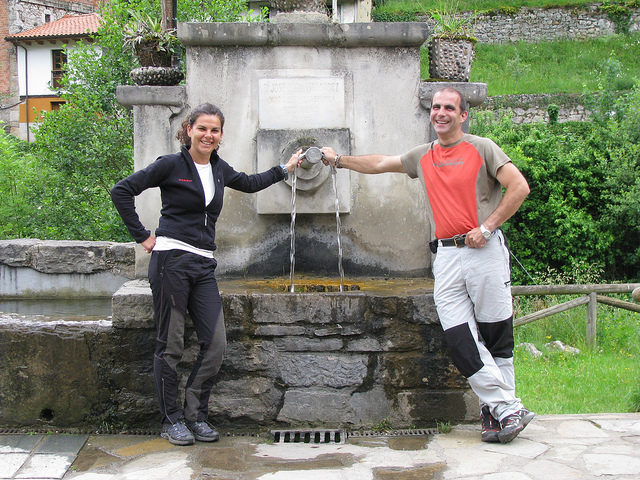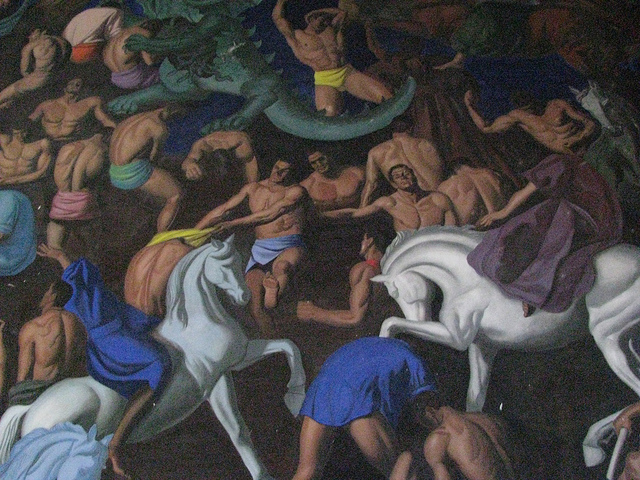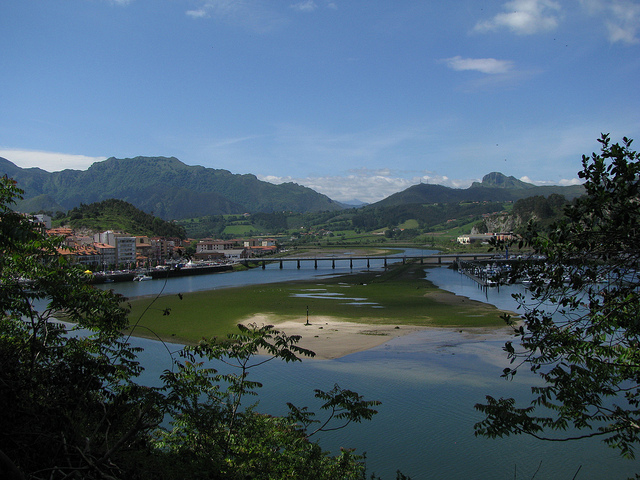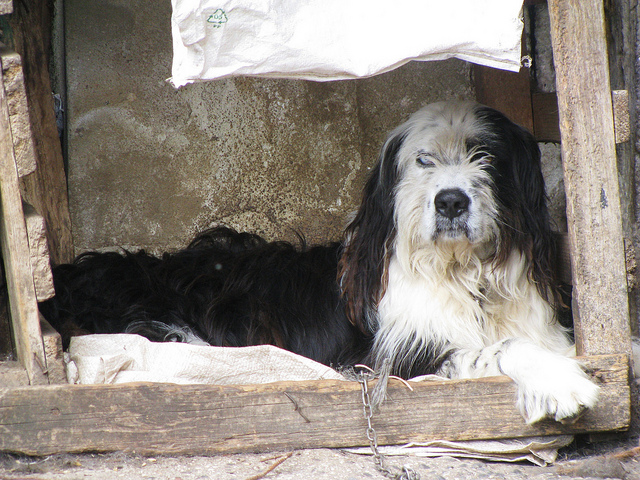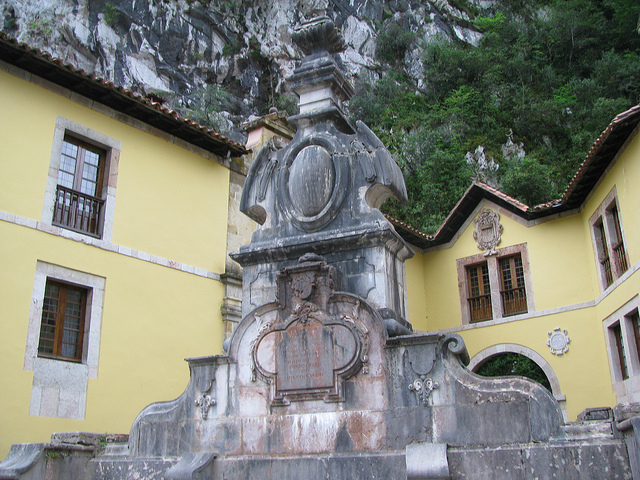As we cycled through some of the former railway tunnels on the Bear Trail Ana also touched on the cultural travel opportunities of Asturias. Asturias has been inhabited for many thousands of years. Prehistoric caves with paleolitic cave paintings that are up to 24,000 years old can be visited in Ribadesella, close to the Atlantic coast. About 2000 years ago, the ancient Romans also left their traces here. And the Spanish Reconquest began in Asturias in 722 when Don Pelayo won a critical battle over the Muslim Moors in the famous Battle of Covadonga, founding the Asturian kingdom and establishing the beginnings of Christianity in Spain.

Our support team follows us on the road
One of the main attractions in Asturias are its amazing Pre-Romanesque monuments; churches such as Santa Maria del Naranco or San Miguel de Lillo, both near Oviedo, were built around 848 AD and are precursors of Romanesque architecture that would not be found in other areas until 200 years later. Based on their architectural and historic significance, these structures have been designated as UNESCO World Heritage Sites and draw many thousands of
tourists every year.

Santa Maria del Naranco – gorgeous Pre-Romanesque architecture
Ana continued to explain that medieval art is also well represented, for example, in the Cathedral of Oviedo and many other church buildings throughout Asturias. The big Asturian cities of Oviedo, Gijón, Aviles and others offer tremendous cultural programs, including music, opera, galleries and theatre. Among the most famous recent contributions to Asturian culture are the Prince of Asturias Awards that have been awarded every year since 1981 for outstanding achievements in such fields as art, communications and humanities, international cooperation, literature, social sciences, sports, technical and scientific research and human understanding. Over the years award winners have included Nelson Mandela, Al Gore, Bill Gates, Woody Allen, Bob Dylan, Pedro Almodóvar, Rafael Nadal and many others.

Beautiful architecture in Oviedo
Cycling along the scenic Senda del Oso, Ana and I also discussed another popular type of travel in Asturias: pilgrimage travel. The famous Camino de Santiago (the Way of St. James), one of Europe’s most important pilgrimage routes, has experienced a tremendous resurgence in recent years. It now attracts a new wave of pilgrims, many of them modern professionals who have been burnt out in the corporate rat race and need to get away from it all to reflect and put their lives in perspective.

Oviedo City Hall
The most popular and well-known route of the Camino is the “Camino Francés” (The French Way) that comes from Paris via Arles and Saint Gilles and goes south of the Cantabrian mountain chain through Pamplona, Burgos and León to its end point in Santiago de Compostela. A less well known is the Northern or Coastal Route (the Camino del Norte, or Camino de la Costa) that runs along the Atlantic coastline and cuts right through Asturias.

Asturian coastline
This route of the Camino is much less crowded that the Camino Francés and is also equipped with many pilgrims’ hostels. The pilgrims’ hostels provide extremely basic accommodation at very low rates (about 3 to 7 Euros a night) to any of the pilgrims that carry the credencial, the pilgrim’s passport. Some of the hostels are funded by donations and are completely free of charge.

Flowers at the Mercado del Fontán in Oviedo
Many retired people walk to Santiago de Compostela on the French Way and return on the Northern Route. Nowadays, the Way of Saint James is no longer reserved to pilgrims traveling on foot, there are now various companies offering tours on the Camino by horse and by bicycle. Ana explained that on foot the Spanish pilgrimage to Santiago takes about one month and by bicycle it takes about 15 days. Pilgrims have to complete at least 100 km of the route, while bicyclists need to cover at least 200 km to qualify as bona fide pilgrims.

Amazing landscapes on the Bear Trail
At a particularly scenic part of the Bear Trail we stopped to admire two tall rock walls that formed a gorge, with the river below. From here we also looked ahead to a couple of the former railway tunnels that were part of this train route. A few minutes away we stopped in a small local village called Caranga where we were going to grab lunch. Unfortunately the restaurant called La Casa al Cura was closed on this Wednesday, so we had to delay our meal.

The village of Caranga
Our next adventure would be a drive into the mountains in Tito’s van to show me some of the Asturian landscapes from high above.
